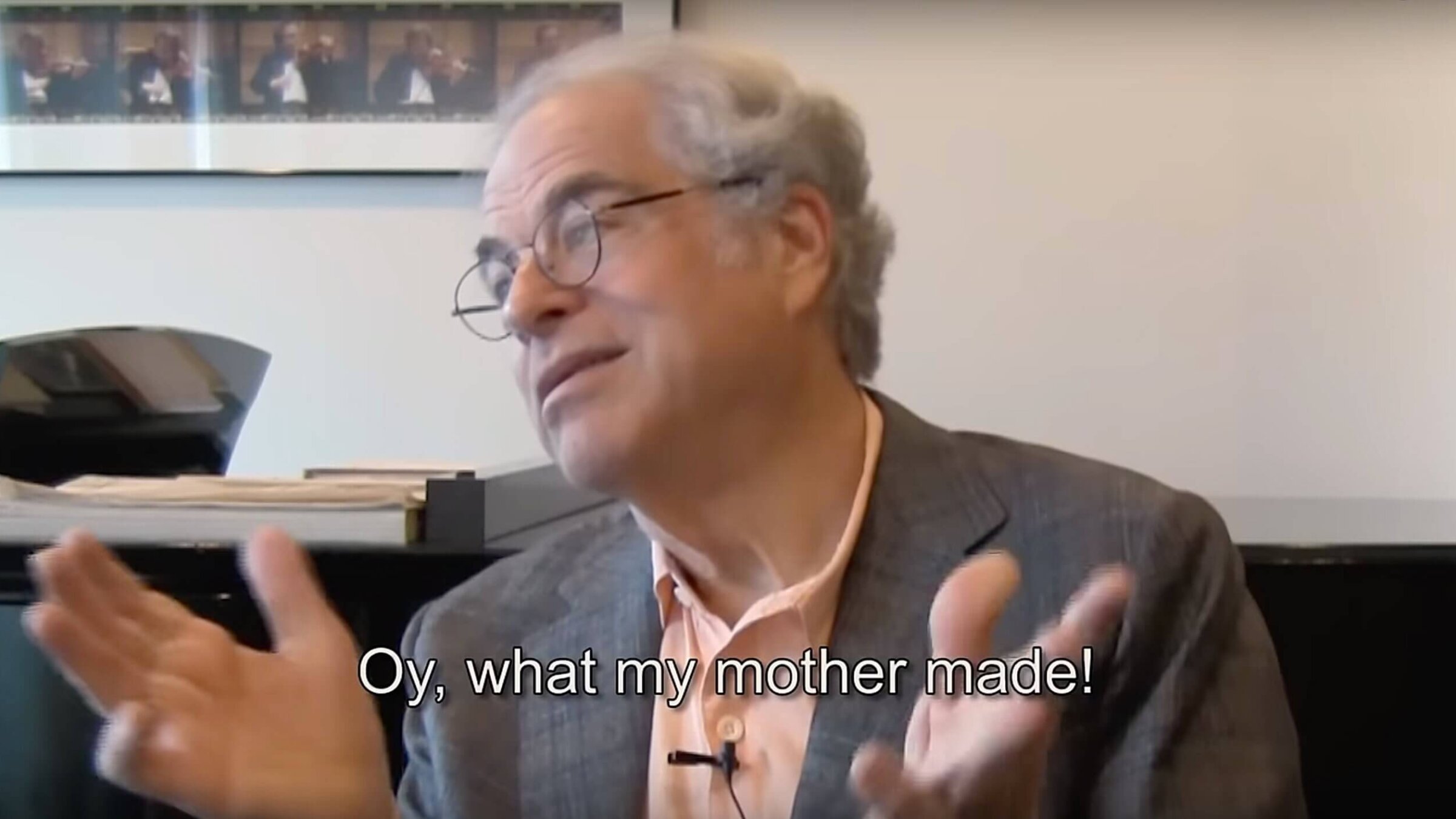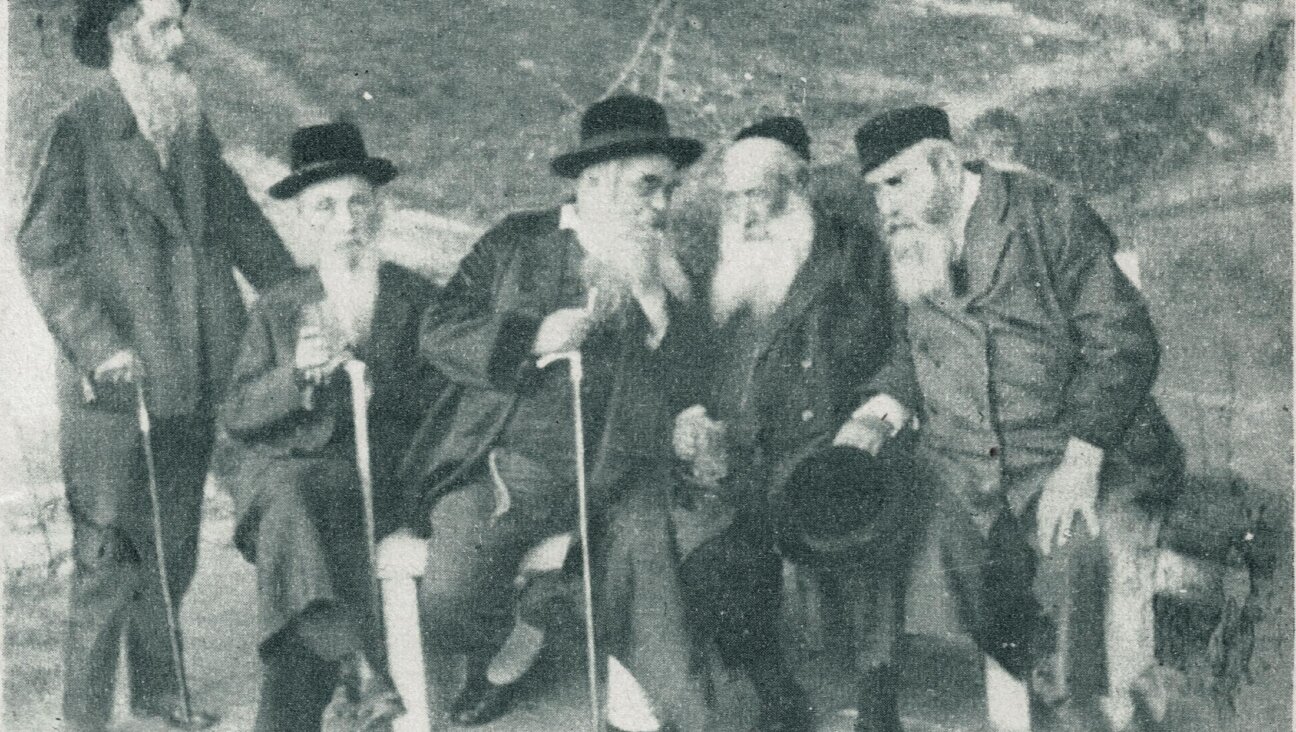VIDEO: Violinist Itzhak Perlman tells us his favorite Passover recipes. Then see us make them.
The virtuoso took some time out of his busy teaching schedule to share childhood memories of his mother’s cooking

Photo by the Forward
Two months before Passover 2016, we were wondering what we could do next for our Yiddish cooking show and we began dreaming of landing an interview with renowned violinist Itzhak Perlman to find out what his favorite Passover recipes were. The goal was to choose two of them, and then show our viewers how to prepare them.
Considering Perlman’s busy concert and teaching schedules, we doubted if anything would come of this.
We were wrong. Two weeks later we got a call-back from his secretary, saying there was an available slot the following week between courses he was teaching at the Juilliard School. When I got off the phone, I literally screamed. The following Tuesday, we — accompanied by our videographer Nokhem — lugged the Forverts video equipment to the storied music school and were led to an empty classroom. Fifteen minutes later, the virtuoso was sitting in front of us.
“Do you mind if we interview you in Yiddish?” I asked.
“Far vos nisht?” he asked, using the Yiddish expression for “why not?”
Knowing that we didn’t have much time, we went straight to the nitty-gritty. “Which Passover foods do you remember eating in your childhood?” Eve asked.
Perlman smiled and began lauding the amazing cooking skills of his late mother. Both of his parents had immigrated to Israel from Poland, so many of her dishes were linked to the culinary traditions of Polish Jews. Perlman himself was born in Tel Aviv in 1945.
The violinist described a number of dishes that his mother would make during the week of Passover. One was latkes fried in schmaltz (chicken fat) which, of course, meant skipping the sour cream accompaniment, since according to the laws of kashruth, meat and milk ingredients are never served together.
There was another twist, too. Though most latke recipes call for frying a thin layer of grated raw potatoes, his mother boiled the potatoes first. Then she mashed them with egg yolk to create thick patties and fried them.
Here Perlman shared his memory of his mother’s Passover latkes before we rushed home to prepare it.
The latke recipe was just one of many that Perlman raved about. His mother’s matzo balls (kneydelekh, in Yiddish) were “fantastish,” as were her kliskes (potato dumplings), also known as klizelekh, that she prepared from raw grated potatoes and then cooked in boiled water. “Gevezn vi a yidishe gnocchi (it was like a Jewish gnocci),” he said with a grin.
For the second video, we opted for a recipe our viewers could easily make themselves: a savory spread that Perlman’s mother prepared out of mashed potatoes, eggs, browned onions and — of course — schmaltz. He said it tasted heavenly when spread on matzah.
Watch him recall all of this with unabashed excitement:
A message from our Publisher & CEO Rachel Fishman Feddersen

I hope you appreciated this article. Before you go, I’d like to ask you to please support the Forward’s award-winning, nonprofit journalism during this critical time.
At a time when other newsrooms are closing or cutting back, the Forward has removed its paywall and invested additional resources to report on the ground from Israel and around the U.S. on the impact of the war, rising antisemitism and polarized discourse.
Readers like you make it all possible. Support our work by becoming a Forward Member and connect with our journalism and your community.
— Rachel Fishman Feddersen, Publisher and CEO





























